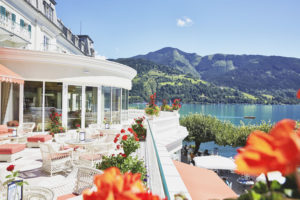Hotel, motel, Holiday Inn…How did Western Montana Hospitality Rebound in 2021?
Looking back on the stats for Montana hospitality, it may be tough to compare year-over-year data due to pandemic-related disruptions in 2020*. As the initial wave of the pandemic rolled out, social distancing and staycations replaced air travel and hotel stays. Many restaurants closed their dining areas completely and bars either closed or limited their hours dramatically. All this to say: comparing 2021 to 2020 isn’t a fair fight.
Instead of comparing data from 2021 to the atypical situation in 2020, we’re looking back to 2019. How is Montana’s hospitality sector faring in comparison to pre-pandemic numbers?
Occupancy is calculated by dividing the number of occupied rooms by the number of rooms in the hotel. In 2021, overall occupancy for Montana hotels was at 65.3%. That’s on par with 2019 when occupancy was 64%. Of course, 2020 declined to 52.2% for the same time frame.
The average daily rate (ADR) this year in 2021 was $135.96, which is up both from last year (in 2020, the average daily rate was $94.95) and 2019 when the average daily rate was $109.22.
Finally, revenue per available room (commonly known as RevPAR) was $88.27 this year, compared to $70.39 in 2019. For reference, 2020 saw a big dip in RevPAR: down to $49.55. Hoteliers arrive at RevPAR by multiplying ADR by the occupancy rate.
Montana’s hospitality rebound began before vaccine rollouts. Partially, social distancing is a little easier under the sparsely populated Big Sky. But, the rebound is also in alignment with the ongoing trend toward being outdoorsy.
Altogether, the hospitality sector is back like gangbusters in Montana.
What happened last year: check in on the Montana hospitality industry in 2020
For commercial real estate, some assets came out of 2020 stronger than ever before. Booming e-commerce meant industrial buildings were a hot commodity as the distribution network expanded. Self-storage and medical facilities were stable throughout the year.
There was also a slow but steady resurgence of office buildings, along with retail making a rocky return.
But what happened for hospitality, one of Montana’s* most economically important industries?
Tourism generates $3.7 billion for the state and supports almost 60,000 jobs. It’s a key commercial asset to track when considering the health of Montana’s economy.
From January to November of 2020, overall hotel occupancy slipped to 52%. That’s down from an overall occupancy rate of 64% in 2019. But even with a 12% decrease, Montana fared better than much of the nation. CBRE most recently reported a 37.9% decline in occupancy in the third quarter of 2020.
Last year, the average daily rate for a room fell 14% in Montana. Across the US, the average daily rate plummeted 26%.
RevPAR is a common metric in the hospitality industry. The acronym stands for revenue per available room and can vary widely depending on the market where the measurement is taken.
In New York, an original hotbed for COVID, RevPAR fell 88%. Other densely populated areas like Boston and San Francisco had similarly steep drops of over 80%.
CBRE reports that no markets saw RevPAR growth in Q3 of 2020. But, Montana only saw a 30% drop in revenue per available room – one of the smaller drops across the nation.
Overall, Montana hospitality emerged from 2020 like many commercial assets: bearing some nasty scars, but moving in a positive trajectory. We’ll keep tracking on hospitality trends as we move through 2021. Subscribe for more on hotel developments around the state.
*Data for Western Montana market, generally a less than 12-month segment.




